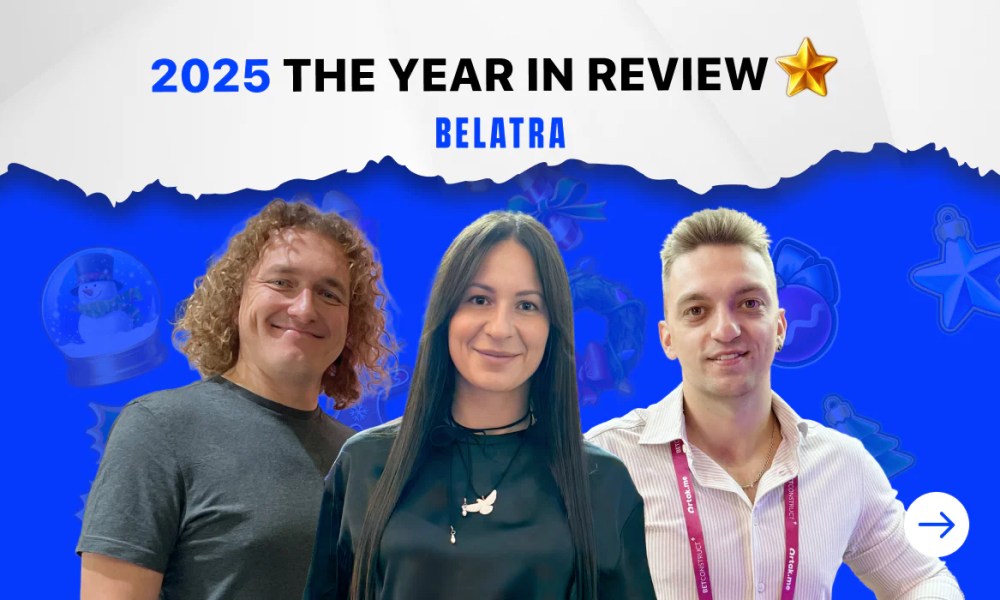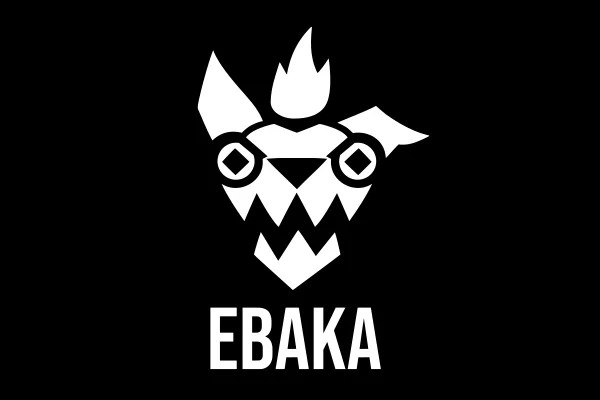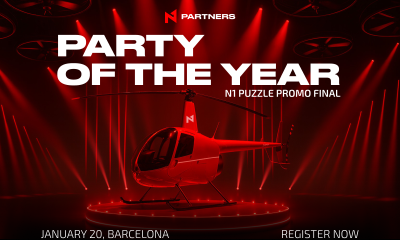Latest News
CHELTENHAM FESTIVAL ‘DEAD CERTS’ SUPPLIED BY PADDY POWER EXPERTS RUBY WALSH, TONY MULLINS, LYDIA HISLOP AND FRANK HICKEY

Panel discusses the tips and tricks when fluttering during the festival, with one horse tipped to “walk to the line” in Tuesday’s Champion Chase
Ahead of the Cheltenham Festival next week, Paddy Power brought together some of the sports’ biggest names to discuss their favourites and tips for each day during the Ultimate Cheltenham Preview Night.
The Paddy Power panel included:
- Cheltenham’s most successful jockey, Ruby Walsh
- Group one trainer, Tony Mullins
- Journalist and broadcaster, Lydia Hislop
- Paddy Power trader, Frank Hickey
With a full week of jam-packed racing on the cards, the racing experts gave a race-by-race breakdown of the ones to watch, including for main event, the Gold Cup.
CHELTENHAM DAY ONE TIPS:
Expect an open race for Tuesday’s Supreme Novice Hurdles. Tony Mullins, tips this to be “the most informative race for the next three of four years”
Tony Mullins says…
“This is a hell of a race, it’s the best Supreme Novices Hurdle that I’ve ever seen. Not just in a few years, but ever. You have Sir Gerhard, Constitution Hill, Dysart Dynamo, Jonbon and Kilcruit.”
“There’s five top class horses unexposed. It doesn’t get any better than that. I’ve never seen a bunch of horses like it.”
“This race is going to tell you a lot about the top-class horses for the next for the next few years.”
“I’d find better bets [to place money on] during the week, because this is a race [the Supreme Novices Hurdle] that’s going to benefit Paddy Power far more than the punters.”
“I’m most looking forward to the Supreme [Novices Hurdle]. If they [the horses] all turn up, it’s going to be the most informative race for the next three or four years.”
Ruby Walsh says…
“Dysart Dynamo and Sir Gerhard are the two that are deadly split, they are the ones to ride, and they will be split.
“I believe whichever one goes to the Ballymore [Novices Hurdle] will win it. But whichever one runs here [at Cheltenham] might win. They Ballymore is much weaker race.”
“I think this is a cracking race, as people have already said.”
“I think if Dysart Dynamo were to run here, this race is made for him.”
Lydia Hislop says…
“For the Supreme Novice Hurdles, I’d also throw in Mighty Potter [as a potential winner]. In a strongly run race, I think he could be finishing off very strongly.”
Frank Hickey says…
“Constitutional Hill had looked very good, and times are good. But on a heavy testing ground, it doesn’t always work out.”
“For me, Sir Gerhard will win. He blew me away, even with his sloppy jumping at Leopardstown. He is by far the most interesting of them all.”
“If he [Sir Gerhard] runs in the Supreme Novices Hurdle, he will win it and then Dysart Dynamo will win the Ballymore Novices Hurdle.”
Ruby Walsh predicts Stormy Island to take the Mares Hurdle after returning to Willie Mullins’ stable…
Ruby Walsh says…
“It’s Stormy Island that will win it for me, she was very good at Fairyhouse last year.
“She was brought back to Willie Mullins’ stable this year then was great at Fairyhouse, won at Punchestown and she’s run well at the festival in the past. I do think this is the weakest Mares Hurdle she’s run in.”
CHELTENHAM DAY TWO TIPS:
Ruby Walsh and Tony Mullins both earmark Shishkin as the banker of the week at Wednesday’s Champions Chase…
Ruby Walsh says…
“Shishkin will win this race.”
Tony Mullins says…
“Shishkin will walk up to the line again [and win]. There’s no evidence to say that anything different could happen.”
Tiger Roll actually might not will be calling it a day at Cheltenham’s Cross Country…
Frank Hickey says…
“This race is probably the one to sweeten Tiger Roll up for the Grand National. That must be the thinking.”
Tony Mullins says…
“Could you imagine if Tiger Roll runs here, but not in the Grand National? I’ve seen crazy things, but that would have to be the craziest move of all time to do so.
“We have the next potential Red Rum. Can you imagine having the only horse [Tiger Roll] for 40 years, who could potentially win a treble Grand National not running because he has a lighter weight? It’s very funny [to think about].”
CHELTENHAM DAY THREE TIPS:
Mares Novice Hurdle splits the opinions of all four experts…
Lydia Hislop says…
“At his very best, Klassical Dream is the best horse in the Paddy Power Stayers Hurdle and he’s going to either completely blow out or run really well. He’s at a reasonable price at 4/1. If he turns up and runs a good race, he wins but there is a possibility he completely blows out.”
MARES NOVICE HURDLE – THE EXPERTS HAVE THEIR SAY…
Ruby Walsh predicts… Champ
Tony Mullins predicts… Paisley Park
Frank Hickey predicts… Sporting John
Lydia Hislop predicts… Klassical Dream
CHELTENHAM DAY FOUR TIPS:
Ruby Walsh and Tony Mullins earmark last year’s Gold Cup runner-up to win this time around…
Frank Hickey says…
“I don’t think A Plus Tard will turn it around. I’ve never been a fan of him to be honest and he wasn’t good enough last year.”
Lydia Hislop says…
“I don’t see why I just can’t have Protektorat. He’ll make mistakes in the early stages and he won’t be able to hold his position.”
“I like Galvin at 6/1, not so much at 7/2. In the back of my mind, I’m worried about the toll that the Gold Cup takes on horses that are coming back.”
Tony Mullins says…
“I’m going for A Plus Tard for all the reasons that Frank says he can’t win. I thought he was brilliant in Haydock, he was beaten at Shorthill by the joint favourite, he was very unlucky last year. Everything points to A Plus Tard.”
“Frank is a very good analyst but everything he says about why A Plus Tard will get beaten, is why I think he will win! One of us will be wrong.”
Ruby Walsh says…
“I agree with Tony, I’d ride A Plus Tard. Galvin had a brilliant run at Christmas and A Plus Tard was in the wrong place the whole time and it’s very easy to turn that result around.”
Powered by WPeMatico
Belatra Games
From ‘Mummyverse’ to Crash Games: Belatra Reviews a Landmark 2025

Editor’s Take
Why this matters: Belatra has been a steady hand in the slots world for a long time, but 2025 marked a distinct shift in strategy. By entering the Crash vertical with Goose Boom Bang and winning big at SiGMA Africa, the studio is clearly pivoting to capture the high-growth, high-frequency players in emerging markets. They are no longer just a “classic slots” developer; they are diversifying the portfolio to ensure relevance in regions like LatAm and Africa.
The Full Story
Belatra Games, the specialist online slots developer, has issued a strategic review of its 2025 operations, celebrating a 12-month period defined by entry into new game verticals, significant franchise expansion, and high-profile industry recognition.
The year was characterized by a dual strategy: deepening engagement in established markets while aggressively expanding its content portfolio to suit local preferences in emerging territories.
Portfolio Evolution: Crash and Battles 2025 saw Belatra move beyond its traditional slot roots. The company made its debut in the high-demand Crash game vertical with the launch of Goose Boom Bang, a title designed to tap into the fast-paced gameplay preference of younger demographics.
Additionally, the studio introduced a fresh game concept with the launch of Battles, a new format unveiled for the first time in 2025, with further development planned for 2026.
The ‘Mummyverse’ Expands For fans of classic slots, the highlight of the year was the aggressive expansion of the Mummyverse. Belatra nearly doubled the size of this franchise over the year, making it the most extensive game universe in their entire catalog.
The developer also focused on B2B localization, releasing a number of exclusive bespoke games created specifically for selected operator partners to meet specific local market tastes.
Awards and Recognition The company’s strategic shifts were validated by industry accolades. Belatra secured over 30 nominations throughout the year, with standout wins including:
-
Best Slot Provider (awarded by BitStarz).
-
Most Played Game of 2025 for Make It Gold at the SiGMA Africa Awards.
-
Player’s Pick Award.
Management Commentary Misha Voinich, Head of Business Development at Belatra, commented on the studio’s momentum:
“This year has truly defined who we are as a studio – ambitious, creative and focused on building long-term partnerships. We’ve expanded our universes, launched new ones and entered exciting new markets that will all help us carry this momentum into the New Year.”
The post From ‘Mummyverse’ to Crash Games: Belatra Reviews a Landmark 2025 appeared first on Gaming and Gambling Industry Newsroom.
BMM Testlabs
‘Chaos and Soul’: Ebaka Games Plots Global Expansion After Viral Launch

Editor’s Take
Why this matters: The “Instant Game” vertical (Crash, Plinko, Mines) is becoming crowded, but Ebaka Games is cutting through the noise with a distinct brand personality. By securing BMM Testlabs certification so quickly after launch, they are signaling to Tier 1 operators that despite their “chaotic” marketing vibe, the math underneath is solid and compliant. The backing of industry veteran Dmitry Belianin also adds immediate commercial credibility to the startup.
The Full Story
Ebaka Games, the fledgling studio that promises to bring “chaos and soul” to the iGaming sector, has outlined an aggressive growth strategy for 2026 following a landmark launch period in late 2025.
The studio, which officially debuted in November, reports that its initial rollout reached more than five million people worldwide. The launch saw its portfolio go live with the operator Menace, serving as the initial testbed for its mechanics and “Ebaka modes.”
The Product: Instant Games with Personality Ebaka is bypassing traditional slots to focus on the high-growth vertical of fast-paced, instant-win games. Their initial lineup includes:
-
Plinko
-
Mines
-
Tower
-
Limbo
-
Crash
Differentiation is achieved through unique mascots and signature gameplay tweaks designed to offer high win potential and distinct visual identities, moving away from the generic interfaces often found in this genre.
Regulatory Milestone Crucially for its 2026 roadmap, Ebaka Games has confirmed it has secured certification from BMM Testlabs. This accreditation validates the fairness and integrity of its RNG (Random Number Generator) and game engines, removing a major barrier to entry for regulated markets. With this certification in hand, the studio plans to launch with a number of “major brands” in the coming year.
Management Commentary Vitalii Zalievskyi, CEO of Ebaka Games, commented on the studio’s unorthodox approach:
“It’s only been a few weeks since we first introduced Ebaka Games to the world. The feedback has been breathtaking, and it vindicates the decision for us to take a different path to the rest of the industry. You don’t need huge marketing budgets to grab people’s attention if you are building something truly innovative.”
Industry Backing The studio describes itself as being “created by players for players” but boasts significant industry firepower in its corner. The team includes Dmitry Belianin, a well-known figure in the sector who is the co-founder of Blask and Menace, as well as Managing Partner at Already Media.
The post ‘Chaos and Soul’: Ebaka Games Plots Global Expansion After Viral Launch appeared first on Gaming and Gambling Industry Newsroom.
ARC
Racing Meets Nightlife: SBK Backs ARC’s New ‘Friday Night Live’ Series

Editor’s Take
Why this matters: British racing has a well-documented demographic problem; its core audience is aging. “Friday Night Live” is a direct attempt to fix this by blending high-stakes racing with the “experience economy” (DJs, nightlife vibes) that appeals to Gen Z and Millennials. Bringing SBK on board—a mobile-first, app-only sportsbook—is a perfect demographic fit, while the Racing Post adds the necessary credibility to ensure the actual racing product remains the focus.
The Full Story
Arena Racing Company (ARC) has unveiled the strategic commercial lineup for its upcoming Friday Night Live series, confirming SBK as the Exclusive Betting Partner and The Racing Post as the Official Media Partner.
Set to launch in January 2026, Friday Night Live is a new initiative created in collaboration with youth-focused events company INVADES. The series is designed to overhaul the traditional race day experience, featuring fast-paced fixtures under floodlights, DJ sets, and significant entertainment elements sandwiched between races.
The Commercial Deal
-
SBK: As the exclusive betting partner, the Smarkets-owned sportsbook will take naming rights and on-course branding for all 35 races. Crucially, these races will be broadcast live on mainstream television via ITV Racing as well as Sky Sports Research.
-
The Racing Post: As the Official Media Partner, the publication will provide content, coverage, and promotion across its digital platforms, aiming to bridge the gap between established racing purists and the new audience ARC hopes to attract.
A High-Stakes Experiment The series is not just a marketing exercise; it carries serious sporting weight. Each of the five scheduled nights will feature over £200,000 in prize money. The fixtures will rotate across three of ARC’s all-weather tracks: Wolverhampton, Newcastle, and Southwell.
Management Commentary David Leyden Dunbar, Group Director of Commercial Strategy at ARC, was clear about the target audience:
“We have been very clear that one of the aims of Friday Night Live is to engage the next generation of racing fans… Both [partners] have shown real enthusiasm to work with us… as well as using the platform that these fixtures will offer them to also engage with more established racing and sports fans.”
Adam Baylis, Marketing Director at SBK, added:
“Friday Night Live [is] a fresh and engaging concept that brings a new energy to British racing. SBK has always been built around sport… our focus is on enhancing the live race day experience in a fun, social and responsible way.”
The 2026 Schedule The series kicks off immediately in the new year:
-
9th Jan: Wolverhampton
-
6th Feb: Newcastle
-
20th Feb: Southwell
-
20th March: Wolverhampton
-
27th March: Newcastle
The post Racing Meets Nightlife: SBK Backs ARC’s New ‘Friday Night Live’ Series appeared first on Gaming and Gambling Industry Newsroom.
-

 Latest News6 days ago
Latest News6 days agoVegangster Gives Operators Real-Time Jackpot Control and a New Revenue Stream with Sharedluck’s JackpotX
-

 Latest News6 days ago
Latest News6 days agoRegistration Open: N1 Puzzle Promo Show & Winner Announcement in Barcelona
-

 Central Europe7 days ago
Central Europe7 days agoScatterKings adds sugar-coated spin to Austria with bespoke win2day partnership
-

 Latest News7 days ago
Latest News7 days agoTop 5 Newest High-RTP Slots at Social Casinos This Month
-

 affiliate marketing5 days ago
affiliate marketing5 days agoSOFTSWISS 2025: 45% Game Portfolio Growth, LatAm Extensive Expansion and Flagship iGaming Trends Report
-

 Asia6 days ago
Asia6 days agoInsurgence Gaming Company Introduces La Imperia, a Community-First All-Female VALORANT Tournament
-

 Christos Zoulianitis Chief Commercial Officer at ENJOY6 days ago
Christos Zoulianitis Chief Commercial Officer at ENJOY6 days agoENJOY Gaming turns up the heat with Hotfire Diamonds 2: Hold and Win 3x5x3
-

 Latest News7 days ago
Latest News7 days agoSlotland’s Crown Jewel, Gods of Egypt, Resurrects with Enhanced Features



















